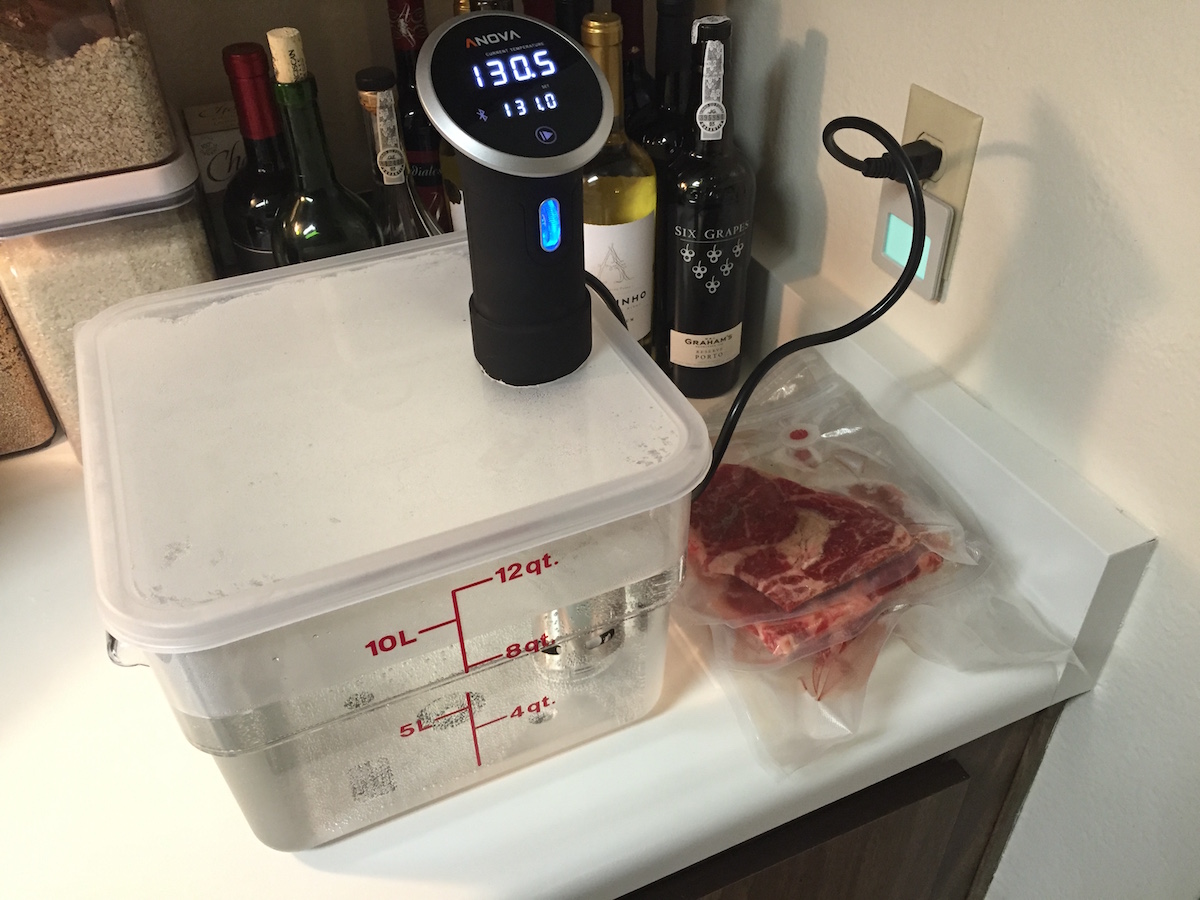How I Sous Vide
12 Mar 2016Sous vide is the hot cool warm new way to cook things. French for “under vacuum,” sous vide takes the guesswork out of cooking: simply grab the meat, vacuum seal it, throw it in a water bath, and wait. Give it some time and boom! Your meat is perfectly cooked!

A few friends have asked about my setup. I compiled my equipment in an Amazon gift list, which includes almost everything I use. The list looks (and is) long (and ultimately, expensive), but here are a few important points worth mentioning:
- To get started you really only need a circulator. The circulator can be attached to any large pot you already have and you can seal your food inside regular Ziploc bags. The Modernist Cooking blog has a great post on how to get a nice seal using regular Ziploc bags.
- A vacuum sealer will let you get an excellent seal on anything you are putting in the water bath. I have the Waring Pro Pistol Sealer and have had no issues with it. While doing research for this post I discovered you can get great vacuum seals for much cheaper using the Ziploc Vaccum Starter Kit.
- You can attach your circulator to a container or pot you already have, but a polycarbonate container with a lid is better at retaining heat which helps your circulator keep the water at the perfect temperature. I used a Dremel tool to cut a circle in my lid so the circulator can be placed in and stays in place without the attachment accessory.
- You can eat meat straight out of the water bath, but searing gives your flabby piece of meat more flavor and a better texture profile. To sear, you can use a pan you already have.
- For improved searing, get a cast-iron skillet which can get hotter (and retain that hot temperature more easily) compared to an aluminum or stainless steel pan. You can put your cast-iron skillet in the oven at a very high temperature and then pull it out when you’re ready to sear the meat. At a very high temperature, you only need to sear each side of the steak for about 30 seconds.
- To sear in style, get a torch! To sear in the greatest of style, get the Searzall Torch attachment which takes your torch game to the max! When searing with a torch, I lay the meat on cookie pan. These pans can handle the heat, are lightweight, and are easy to clean.
- I use tongs to turn, flip, and move the meat. I avoid using forks because the first thing that breaks into the meat should be the diner’s utensils. A turner could work too, but that could get a bit hairy when you have heavy slabs of meat!
- The only thing missing from the Amazon gift list are the Propane Gas Cylinders which I buy at Home Depot because prices on Amazon are much higher due to increased shipping costs for flammable products.
- The overall temperature of anything cooked by sous vide never gets really high (e.g. steaks in the water bath in the 130-140° F range). To avoid that cold food feeling, I recommend warming up (oven-safe) plates in the oven prior to serving food. A few minutes in the oven around 170° F gets the plates nice and toasty and helps compensate for the low temperature cooking.
And there we have it! If you have any questions about sous vide or I’m missing out on some killer piece of hardware or some amazing technique tweet at me!